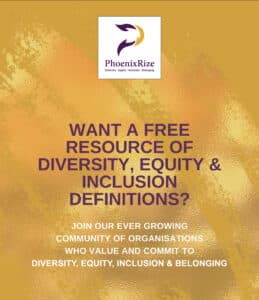How can managers create workplace environments where people feel comfortable being themselves? Research has shown that hiding our true identities can cripple professional performance. For instance, closeted LGBT employees feel much more isolated at work than their openly gay peers, and 52% of closeted employees feel their careers have stagnated, compared to just over a third of their out colleagues. “This appears to be the case largely because closeted workers suffer anxiety about how colleagues and managers might judge them,” write study authors Sylvia Ann Hewlett and Karen Sumberg, “and expend enormous effort concealing their orientation, which leaves them less energy for actual work.”
But this isn’t just an issue for LGBT professionals. The Deloitte University Leadership Center for Inclusion report, Uncovering Talent, reveals that 61% of all employees “cover” their identities in some way – not necessarily hiding something, but downplaying it for fear of drawing unwanted attention or making others uncomfortable. A gay person might be technically out, but not display pictures of his partner at work. A working mom might never talk about her kids, so as to appear “serious” about her career. A straight white man – 45% of whom also report covering – might keep quiet about a mental health issue he’s facing.
Enabling employees to feel comfortable being themselves could unlock dramatic performance gains because they can focus their attention on work, rather than hiding parts of themselves. So how can managers make this a reality? Here are five strategies they can employ to help talent uncover in their organizations.
Shift the language. When corporations talk about “diversity,” a significant chunk of the population tunes out. They’re not talking about me, they assume. But if you, as a manager, introduce the concept of “covering” – downplaying or hiding certain aspects of yourself so as not to appear different – the conversations shift. Everyone can relate to the term because most people have done it at some point in their career, and it permits a new dialogue on your team about differences. It’s a small but subtle change that ensures everyone recognizes they’re a part of the discussion.
Share your story. We know leaders set the tenor for an organization’s culture. If you want your employees to feel safe sharing their stories, you have to step up and tell your own. Christie, for instance, has publicly shared her experience being in the World Trade Center when it was attacked on 9/11. For years, she hid the profound anxiety and survivor’s guilt she faced, but came to understand the power of “uncovering” those feelings and the example it could set for her colleagues. Whether or not you’re part of a traditional “minority” group, most of us have had experiences related to covering, whether we faced it ourselves or witnessed it in someone close to us. Start the dialogue and let others know it’s OK to do the same.
Embrace analytics. Companies could consider developing an Inclusion Index, as Deloitte has done. This tracks the hiring and promotion practices of each partner, across several specific slices of diversity. (Are they promoting female talent effectively, but not people of color? Might they – even inadvertently – be acting in a biased fashion?) Tracking hard data holds departments, and the leaders in them, accountable for their actions when it comes to inclusion.
Force the conversation. In the Uncovering Talent study, 98% of professionals surveyed said their companies had stated a commitment to inclusion – but only 72% said their company lived up to it. That gap leaves both companies and their leaders vulnerable to charges of hypocrisy. It also risks damaging relationships with customers and employees. Making time for hard conversations now can help prevent serious reputation damage later. That’s why it’s critical for managers to build genuine connections with their employees (which makes them feel seen and understood), and speak up if they believe elements of the corporate culture push people into covering. And senior leaders can make a difference by building accountability around inclusion into the performance review process. Inclusion is too often an afterthought, but if you’re tracking and measuring your managers’ progress around supporting diverse talent, they’re going to start paying attention fast.
Look beyond the obvious. Conversations about “diversity” often focus on one element of a person – their race, their gender, their sexuality – to the exclusion of all else. But overwhelmingly, professionals don’t want to be defined by a single dimension of their identity (“the black guy” or “the gay one”). Managers can help their employees “uncover” at work by recognizing that everyone has differences, and those differences represent only a part of who they are as individuals.
High performing companies recognize that diverse perspectives can strengthen their performance, and that homogeneity can cause blindspots (as with a team of right-handed YouTube engineers who realized 10% of videos were being uploaded upside-down because they hadn’t considered how left-handed users would maneuver their phones). But in order to unlock the benefits of diversity, we have to make it safe for employees to “uncover” and bring their full selves to work.


